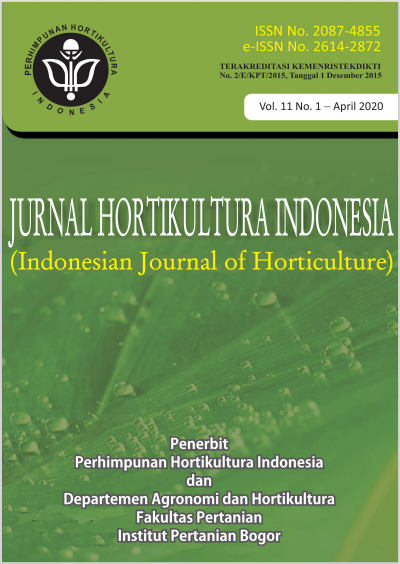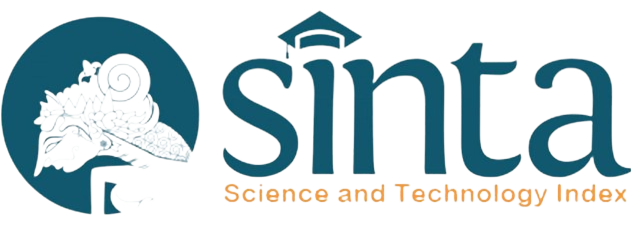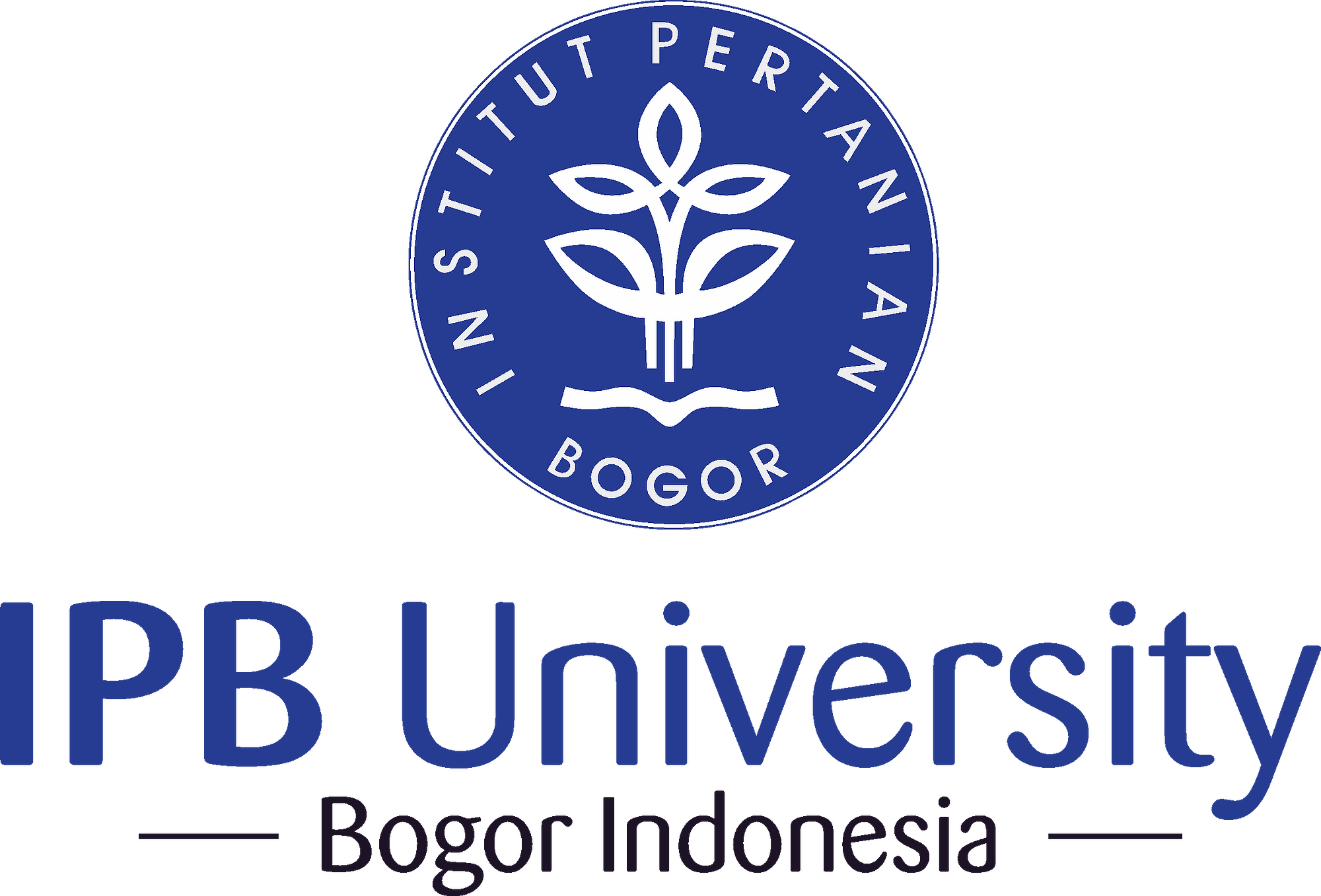Keragaman Genetik Bawang Merah (Allium cepa var. aggregatum) Berdasarkan Marka Morfologi dan Molekuler
DOI:
https://doi.org/10.29244/jhi.11.1.51-60Abstract
Shallot (Allium cepa var. aggregatum) in Indonesia are commonly vegetative propagated, but the scattered shallots are so diverse that they are suspected of having high genetic diversity. This study aimed to identify morphological diversity using 21 characters of shallot and molecular diversity using RAPD markers. The results showed that morphological characters divided 40 shallot genotypes into two main groups at a dissimilarity coefficient of 0.59 i.e group A (38 genotypes) and group B (2 genotypes), while morphological analysis based on 14 morphological characters of bulbs showed two main groups at 0.50 dissimilarity coefficient i.e group A and group B, consisted of 36 and 4 genotypes, respectively. Based on molecular markers, there were two main groups at 0.41 dissimilarity coefficient i.e. group A (3 genotypes) and group B (37 genotypes). RAPD markers generated 229 DNA polymorphic band with a total of 100%, and the informative primers were SBN2, OPE11, and SBN9. The clustering of 40 genotypes in this study did not relate to geographic origin. The genotypes of BM12, BM19, BM78, and BM01 have long leaf size, largest size and bulb diameter, and having dark of skin base color dry bulb intensity. BM63 and BM24 have erect foliage attitude, medium leaf length, medium size and bulb diameter. These potential genotypes can be developed to improve shallot varieties in Indonesia.
Keywords: dissimilarity coefficient, genotype, informative primers, RAPD
Downloads
Downloads
Published
Issue
Section
License
You are free to:
- Share — copy and redistribute the material in any medium or format for any purpose, even commercially.
- Adapt — remix, transform, and build upon the material for any purpose, even commercially.
- The licensor cannot revoke these freedoms as long as you follow the license terms.
Under the following terms:
- Attribution — You must give appropriate credit, provide a link to the license, and indicate if changes were made. You may do so in any reasonable manner, but not in any way that suggests the licensor endorses you or your use.
- ShareAlike — If you remix, transform, or build upon the material, you must distribute your contributions under the same license as the original.
- No additional restrictions — You may not apply legal terms or technological measures that legally restrict others from doing anything the license permits.
Notices:
You do not have to comply with the license for elements of the material in the public domain or where your use is permitted by an applicable exception or limitation.
No warranties are given. The license may not give you all of the permissions necessary for your intended use. For example, other rights such as publicity, privacy, or moral rights may limit how you use the material.













